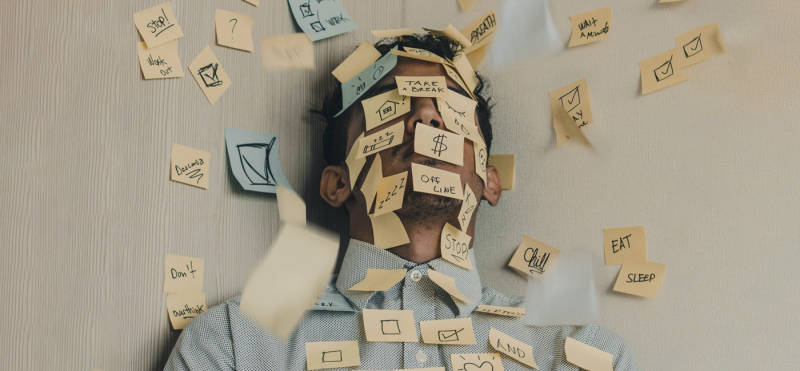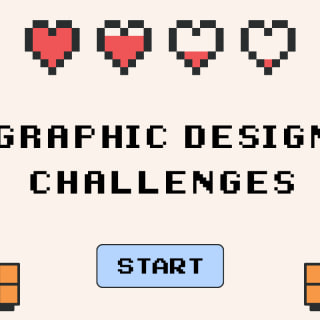We all know the perils of a last-minute job. Deadlines can be stressful, so we’ve prepared 5 simple time management tips for all the creative heads out there.
Hold on, doesn’t time management sound like yet another task to worry about? We know what you mean. But there’s more to it than increased ‘efficiency’ and a suspicious amount of caffein. It’s about feeling more comfortable as you work and not putting your creativity under time pressure. This can start with a couple of questions: When are you at your most creative? How do you decide it’s time to take a break? Strong time management also benefits from the times when you’re doing nothing.
So, you want to reduce deadline stress? Well, here we’ll show you how time management can be used in your work and creative endeavors.
What’s the point of time management?
We’ll start simply: to reduce stress. By using tools to plan your upcoming tasks, you can keep an eye on what’s coming up and tackle them one-by-one. You’ll learn to weigh up and prioritize as well. The advantages are:
- You’ve got more time for the things you’re passionate about
- You can see your results, evaluate them statistically which helps you deliver high-quality work
- You will achieve the goals which you have set yourself
- You learn skills which can be also effectively applied to your private life
How does this time management thing work?
Getting going can be difficult. That’s why we’ve got 5 quick tips on gaining better control of your precious time. Give them a try and see how you get on.
1. Structure and Organization
- You need a bit of organization to stop yourself getting swamped by your tasks. Use calendars and time planners to write down your upcoming commitments. Note the deadlines and make sure they remain visible. You know the phrase, ‘out of sight, out of mind’? Well roughly aim for the opposite of that.
- Do you use a sketchbook for your work? Brilliant. Categorize your work with colors, symbols and post-it notes. This will save you time when you’re looking for certain topics.
- Figure out which day you work best on. You hit your peak on a Wednesday? Nice one. Then use your diary to plan your creative projects. This can also depend on the time of day rather than the actual day. Jump on to your projects when you’re feeling creative at different points throughout the week.
- E-mails, mobiles, telephones (remember them?) should be left alone for a little while. Monet managed to get his stuff done without Candy Crush. Switching off digitally will help you concentrate be work without distractions. Your creativity will be rewarded when you can’t be disturbed. Give it a bash, let the magic happen…
2. Set Priorities
There are two things you should always keep your eye on: importance and urgency. Here’s how it works.
- The tasks which are both important and urgent, should be done right away.
- Important but not urgent tasks should be carried out in a more relaxed manner, when you are in the right frame of mind.
- A task is urgent but not important? You might want to ask yourself if you need to do it at all
- Neither urgent nor important? Then probably make the call it’s not worth doing!
3. Write daily to-do-lists
- Now you’ll see if your time management really works with your tasks. You might realize you have too much or too little time.
- Finished for the day? Then write your to-do-list for the next day. You’ll start the new day with a free mind and future you will love it.
- If you don’t manage to get everything done before it’s time to stop, then put them on your list for the next day.
4. Set time limits
- Can you identify repetitive or unique phases? Preparation? Research? The first sketch or a first brief recording of your idea? The developing of this idea? The completion and editing of your print files? You know what we mean.
- So, you’ve identified your different work phase? Ideal. Now set a time frame for each one. Give yourself a bit of buffer to avoid time pressure. Don’t be too hard on yourself.
- Take breaks! After each phase. For the more exhausting periods take more time off. Even within tasks, if you feel it’s getting too much, put it to the side for a moment. Especially at the longer and more difficult stages of your project, free your mind and your eyes every now and again. Look out the window, look at the sky. Main thing is you look away from your screen or sketch!
- Experiment with the time periods (just like Einstein 😉). Adjust your personal times and see if your work feels better that way. Don’t get confused: it may take a while until you find the right workflow.
5. Set yourself goals
The goals you set should not only be clearly formulated, they should be doable. This is where the so-called SMART-Goals come into play.
- S as in specific, or more simply, meaningful and significant. What do I want to achieve? Why is it important?
- M as in measurable. How much do I need to do achieve my goals? When will I be finished?
- A as in achievable. How can I reach my goals? Can I achieve what I want to here whilst respecting my own personal boundaries?
- R as in relevant, for results-oriented. Is the goal worth the amount of effort I am going to put in? Will it make sense to friends, colleagues and target audiences?
- T as in terminated, i.e. time-related, time-bound or time-limited. The question at this point is: What can I do now, what must I do later, and what must be done afterwards?
There’s one last thing to say about time management: enough reading, time to get planning. We hope our tips will make your daily tasks a little easier and open up new possibilities for you to be creative, work in a relaxed way and switch off. Remember, being creative should be fun. As always, we’d love to hear from you in the comments.
Do you have other ways of managing your time that you want to share with us and the community? You know where to find us.






